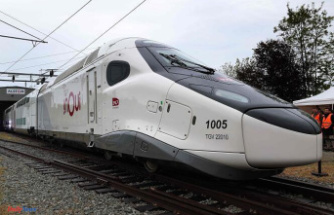Pandemic and war drive up the prices of many commodities. Increasing energy costs, strained supply chains and a high level of private property interest are also having a significant impact on the extraction of gravel and sand. Experts expect costs to rise further in the coming year.
According to experts from the federal government, the key construction raw materials gravel and sand could become even scarcer and more expensive in Germany. The Federal Institute for Geosciences and Natural Resources (BGR) in Hanover cites resistance to the maintenance or expansion of local extraction sites, excessively long planning processes and the increased energy costs for mining and processing as reasons for this. There are now "considerable problems" in the extraction of gravel and sand, according to the presentation of a new study by the specialist authority, which is analyzing the raw material situation on behalf of the Federal Ministry of Economics.
Gravel is mainly used in the production of concrete for building construction, civil engineering and road construction. Fine-grained sand is also an important resource there. Many building materials had already become more expensive in the past two years. The often inadequate supply - together with a lack of skilled workers and torn supply chains - hit private house builders as well as the construction industry as a whole.
An evaluation by the BGR scientist Harald Elsner on the situation of around 270 of the more than 2,600 German sand and gravel extraction sites has now revealed: "Competing uses through water, nature and landscape protection areas, infrastructure facilities such as roads and railways, residential buildings and commercial areas" could the existing Exacerbate bottlenecks in both construction raw materials. "In addition, private property interests often stand in the way of mining."
In some cases, 50 to 70 percent of the deposits could no longer be mined. "In some regions of Germany, especially in Bavaria and Schleswig-Holstein, gravel companies are no longer able to purchase local mining land at all." In the metropolitan areas of Berlin, Cologne and Dresden, supply should become difficult in the medium term. The shortage of supply drives up the procurement costs for concrete gravel and concrete sand.
The BGR estimates that the prices, which have already risen, are "foreseeable to continue to rise by 10 to 15 percent a year". As a result, more had to be imported, and the necessary additional transport polluted the environment. Wherever diesel machines are still used in processing, there have been significant increases in energy costs.
"It looks better in larger gravel works that are connected to the power grid," according to the BGR. "Many of them want to convert their energy supply to photovoltaics and operate their vehicle fleet with the help of self-generated green hydrogen." However, floating solar systems on quarry ponds are often not approved.
The BGR had already warned of bottlenecks in an earlier study. Elsner wrote in the spring of 2020 that large construction orders were no longer accepted and quantities of gravel were allocated according to availability. The construction and building materials industry also spoke of a shortage. Recently, in many places, more sand was requested than was covered by the supply. Now building, which is already more expensive due to rising interest rates, could possibly become even more expensive.












